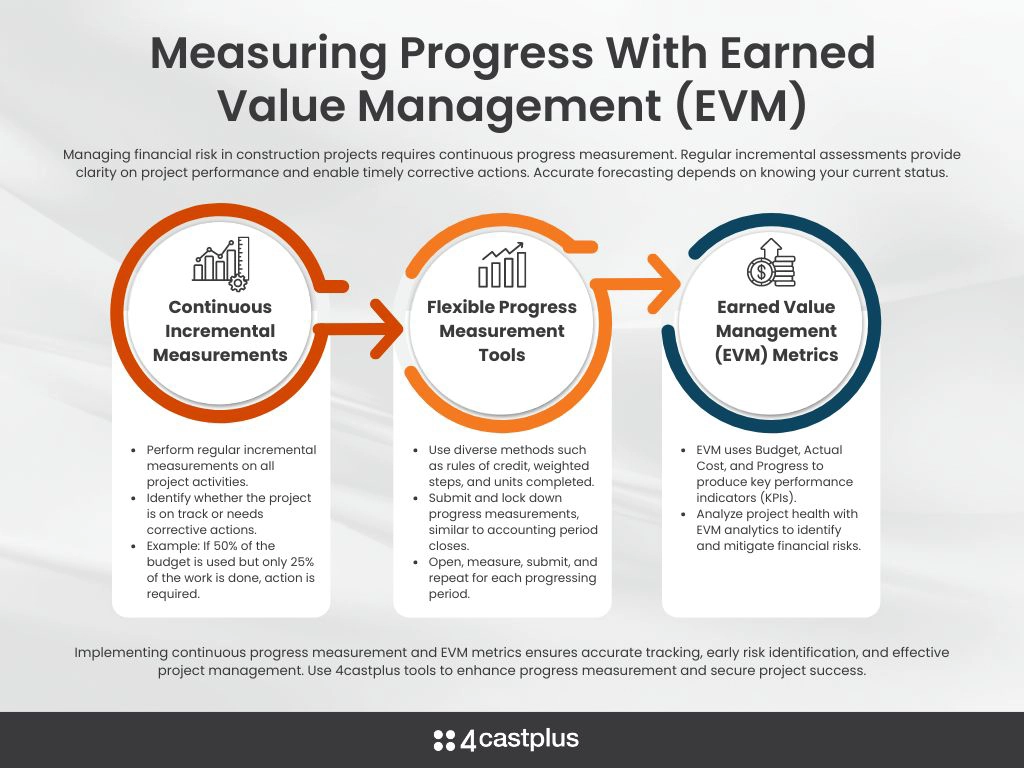Read In 10 Minutes
Navigating Large Construction Projects
As annoying and disruptive as a construction project can be when you’re stuck in your car waiting for your one lane to clear past the flagman redirecting traffic; it is a marvel to see the result once it’s all complete and operational. Somehow, magically, even big projects eventually finish, whether they’re a success or not may be another story. With these large projects, the bigger they are, it seems, the higher the likelihood that they will take longer and cost far more than expected. And that’s because major construction projects are incredibly complex with an immeasurable number of moving parts – and a very slim margin for error.

At every level of the project hierarchy – from the investor to owner to EPC to contractor to supplier and trades – there is inherent financial risk. To minimize this risk, more and more contractors and owners are turning to improve their technology solutions used to oversee and control the costs, revenues, schedules, and resources on major projects. To accomplish this manually or with spreadsheets has proven to be unachievable, labor-intensive, and prone to error. The technology available today for this purpose is designed specifically for the task of de-risking complex construction projects and delivering project certainty.
The role of project controls, for example – both in the technology, as well as in the required roles on the project team – has grown dramatically in the past 10 years as more and more contractors are recognizing the key function it plays in the strong rigor and careful oversight of major projects. Project controls in software solutions includes a broad spectrum of key tools dedicated to cash flow planning, risk management, project budgeting, forecasting, management of change orders, and more. In this article, we’ll explore three powerful project controls tools every contractor should consider using to de-risk the finances of their construction projects.
Using an S-Curve to Track Project Health and Spend
The S-curve allows contractors to take informed data-driven decisions toward keeping financial risks in check, forecast potential outcomes, and avoid delays or cost overruns. The reason an S-curve is a great project controls measure is that it tracks the real-time progress of the project against established key performance indicators (KPIs) such as actual cost, planned value, earned value, committed budget and forecast. S-curves plot these KPIs over a time period to provide project managers insights regarding whether:
-
- The project spend is within budgetary expectations
-
- Project progress is in line with the planned and actual
-
- Project forecasts are indicating the project will be on budget and on time
Additionally, the S-curve will also provide prompt warning signs related to potential issues on the horizon related to construction delays or spending in excess of budget. For instance, if the S-curve shows that project progress is lagging behind expectations, contractors can take swift corrective action to ensure that project performance becomes in line with the set KPIs once again, potentially averting the risk of going overboard on costs or time.
Learn More About Construction Reporting
Measure Progress for EVM

Critical to managing financial risk on construction projects is to do continuous measurements of a project’s progress to determine where you’re at at any point in time. By performing regular incremental measurements on all activities, project controls professionals can gain clarity on whether it’s performing to plan, or whether corrective action needs to be taken. For example, if 50% of an activity’s budget has been burned, but only 25% of the work has been completed, clearly there is a problem. This leads to a much more accurate forecast since you need to know where you’re at before you can determine where you’re going.
Essential to accurate progress is to perform measurements incrementally throughout the life of the project. 4castplus provides a rich array of progress measurement tools that enable flexible methods for how progress is measured on each project’s activity. Such as rules of credit, weighted steps, units completed and many more. Once ready, a progress measurement is submitted and locked down in a similar fashion to the period close in an accounting system. The next progressing period is then opened, measured, submitted, and so forth for the duration of the project.
Earned Value Management (EVM) metrics have become a standard set of KPIs for determining the health and outcomes of a project. EVM is calculated based on the inputs of: Budget, Actual Cost and Progress. Once these three values are known, the system will produce an abundance of EVM analytics that shed light on the health of every aspect of the project. This delivers an indispensable means for identifying and de-risking any financially troubled areas.
Carefully Managing Change Orders
It is often the case that construction projects undergo various changes during their lifetime. Changes can be triggered due to a host of reasons such as – client requests, the need for design alterations, unforeseen mishaps on the construction site etc. Improper documentation and management of these changes can lead to major financial risks for contractors in the form of cost overruns, project delays, or disputes with stakeholders. Hence, implementing sound change order management practices becomes an integral activity to de-risk construction projects.
Using a change order management software provides end-to-end visibility into the scope impact of change orders. As a result, contractors can accurately document all required changes to the project, communicate them to relevant stakeholders, secure buy-in through the creation of new contract commitments and minimize the risk of delays or legal issues. Additionally, software also helps ascertain the financial impact of change orders which can then be used to make prompt adjustments to the budget and create a new, accurate forecast for the next steps of the project. This will provide contractors with the financial clarity required to avoid cost overruns and complete the project within the original or adjusted timeline.
Every construction project involves significant financial risks which contractors need to mitigate through sound de-risking measures. This can be achieved by using the right project control tools such as an S-curve to track project performance against KPIs, measuring progress to determine current status and forecast outcomes, and carefully managing change orders by keeping all necessary parties in the loop and making prompt, auditable changes to the budget, schedule and resources.
Learn More
Building positive relationships with clients is crucial for businesses to thrive. 4castplus can help you achieve this by providing reliable and efficient software to manage your projects. To learn more about how 4castplus can support your construction company’s success, contact us today. We are also happy to provide a demo for you to see 4castplus in action and learn how it can help your construction company.
 Platform
Platform Solutions
Solutions Owners
Owners Contractors
Contractors Engineering/EPCM
Engineering/EPCM Professional Services
Professional Services Resources
Resources White Papers
White Papers Case Studies
Case Studies Blog
Blog Videos
Videos Frequently Asked Questions
Frequently Asked Questions Company
Company About
About

